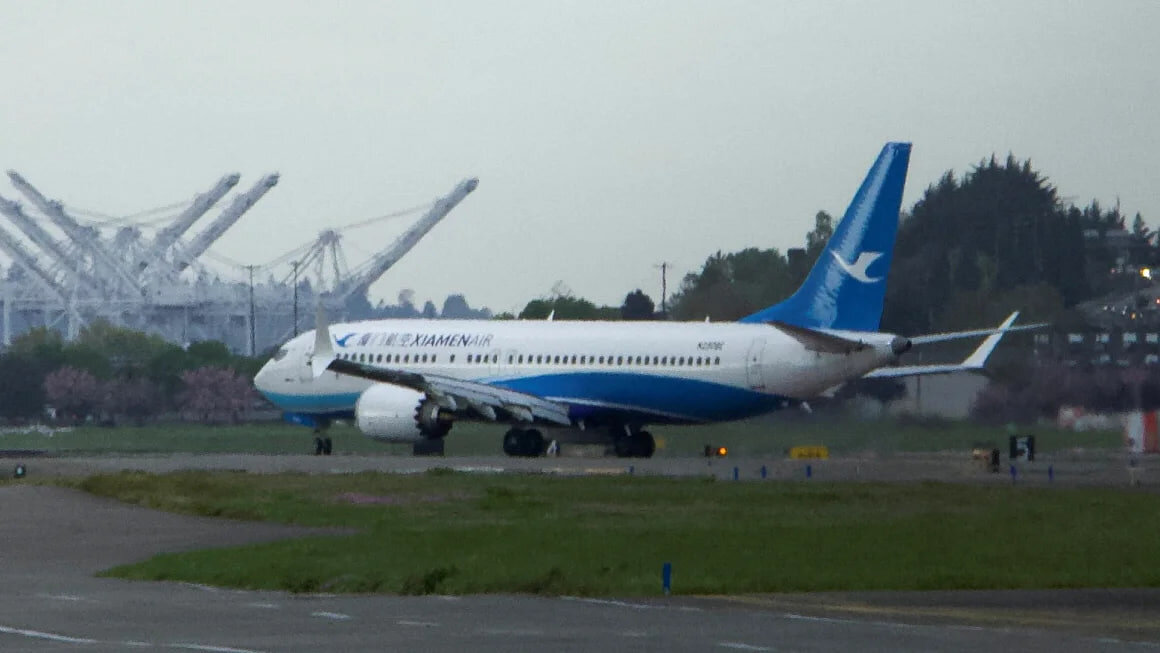Boeing Jet Makes Triumphant Return to US from China Amid Trump’s Tariff Fallout
In a significant development within the aviation industry, a Boeing jet designated for a Chinese airline made an unexpected return to the manufacturer’s U.S. production hub. This incident underscores the ongoing impact of the bilateral tariffs initiated by former President Donald Trump as part of his global trade strategy. The aircraft, a 737 MAX, was originally intended for Xiamen Airlines, highlighting the complexities of international trade and its effects on the aviation sector.
On Saturday, the Boeing 737 MAX landed at Seattle’s Boeing Field at precisely 6:11 p.m., as confirmed by a witness from Reuters. Notably, the aircraft was adorned with the livery of Xiamen Airlines, further emphasizing its intended destination. The jet’s return journey spanned approximately 5,000 miles (or 8,000 kilometers) and included refueling stops in Guam and Hawaii, illustrating the extensive logistical considerations involved in such operations.
This particular incident is part of a larger context involving several 737 MAX jets that are currently awaiting final completion and delivery at Boeing’s Zhoushan completion center in China. The impact of tariffs and trade tensions has made it increasingly difficult for Boeing to fulfill its commitments to international clients.
Here are some key points regarding this situation:
- Aircraft Details: The Boeing 737 MAX is a highly anticipated model known for its fuel efficiency and modern technology.
- Intended Airline: The aircraft was specifically designated for Xiamen Airlines, a prominent carrier in China.
- Trade Tensions: The return of the jet reflects the ongoing trade war between the U.S. and China, which has seen tariffs imposed on various goods.
- Logistical Challenges: The aircraft’s journey included multiple stops, underlining the complexities of international logistics in the current trade environment.
This return of the 737 MAX to the United States serves as a poignant reminder of the challenges faced by manufacturers in a rapidly changing global trade landscape. The implementation of tariffs has not only affected the delivery of aircraft but has also raised questions about future contracts and partnerships between U.S. companies and foreign airlines.
As Boeing navigates these challenges, the company has expressed its commitment to maintaining strong ties with its international clients, despite the hurdles presented by the trade conflict. The aviation industry is closely monitoring how these developments will unfold, particularly as they relate to future aircraft deliveries and production schedules.
In addition to the economic implications, this situation also raises broader questions about the future of global trade and its impact on industries dependent on international cooperation. As tariffs fluctuate and trade policies evolve, companies like Boeing must adapt to an ever-changing marketplace.
Looking ahead, the outcome of this situation may influence Boeing’s strategic decisions regarding production and sales in international markets. The company’s ability to respond effectively to these challenges will be crucial in maintaining its competitive edge in the global aviation industry.
In conclusion, the landing of the Boeing 737 MAX at its U.S. production hub signifies not only the operational challenges faced by the airline manufacturer but also highlights the intricate interplay between international trade policies and the aviation sector. Stakeholders in the industry will continue to watch closely as Boeing works to navigate these complexities and fulfill its commitments to clients worldwide.






